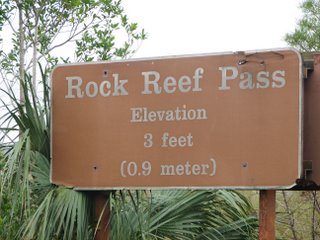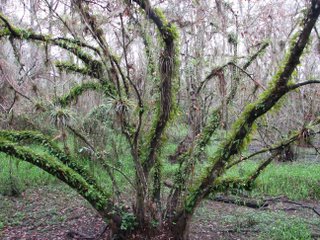The Florida Keys and Everglades National Park
 In the 1940’s Marjory Stonemen Douglas awoke people to the notion that the Everglades is a vast, flowing river that literally drops only inches in the course of miles. As the park brochure stated, today this fragile ecosystem is “on life support, alive but diminished.” Water control structures around the park’s boundaries control the flow of water into the Everglades. Agriculture, vast housing developments and rapid population explosions in the area are dumping large amounts of pollution into the system. Roadways that are not raised above the ground restrict the flow of water into manmade canals, eventually disrupting the natural ecological order. It is ironic that in a state that has so much fresh water in the form of swamps, marshes, lakes and other wetland areas that residents are facing water shortages. But hey we always need another green lawn and golf course right!?
In the 1940’s Marjory Stonemen Douglas awoke people to the notion that the Everglades is a vast, flowing river that literally drops only inches in the course of miles. As the park brochure stated, today this fragile ecosystem is “on life support, alive but diminished.” Water control structures around the park’s boundaries control the flow of water into the Everglades. Agriculture, vast housing developments and rapid population explosions in the area are dumping large amounts of pollution into the system. Roadways that are not raised above the ground restrict the flow of water into manmade canals, eventually disrupting the natural ecological order. It is ironic that in a state that has so much fresh water in the form of swamps, marshes, lakes and other wetland areas that residents are facing water shortages. But hey we always need another green lawn and golf course right!? Mangroves:
Mangroves:There are three different types of mangroves which grow in southern Florida. Along the seaward edge of the coast are found red mangroves, one of the few trees that can live in salt water. Their arching prop roots trap silt eventually building up islands of dry land. Further inland, the black mangrove, with their erect, pencil like roots replace the reds. The white mangrove usually occupies the highest elevation farthest inland than either the red or black mangroves. These mangroves swamps form a dense tangle that is often impenetrable by people but is a wonderful habitat for wildlife. They provide protection and food for a variety of small fish and invertebrates, as well as, birds, snakes and small mammals. Similar to coastal marshes all three of the mangroves are an important buffer against tropical storms. Unfortunately, the importance of these plants is often overlooked in the name of development. Vast tracks of them have been removed and the side effects are noticeable after the intense storm season of the past couple of years.
 Wildlife:
Wildlife:Wildlife was not hard to find in southern Florida. Despite the large tracks of development, the Florida Keys and Everglades National Park continue to be a place where wildlife flourishes. Here is a small sample of the many different species we saw:


Big Cypress National Preserve:
On our way west through the Everglades we went through Big Cypress National Preserve. This preserve is located where temperate and tropical climates converge, so it offers an unusual diversity of plant and animal life. About 30 Florida panthers still reside here, although inbreeding is now another obstacle they must overcome. We were not fortunate enough to see one of these shy, nocturnal animals but we did get a glimpse of a stuffed one in the visitor center.
The biggest tourist attraction in the preserve is the large bald cypress trees. Just a few of these giants survived the logging onslaught. A short boardwalk offered stunning vies of these beautiful trees.










0 Comments:
Post a Comment
<< Home